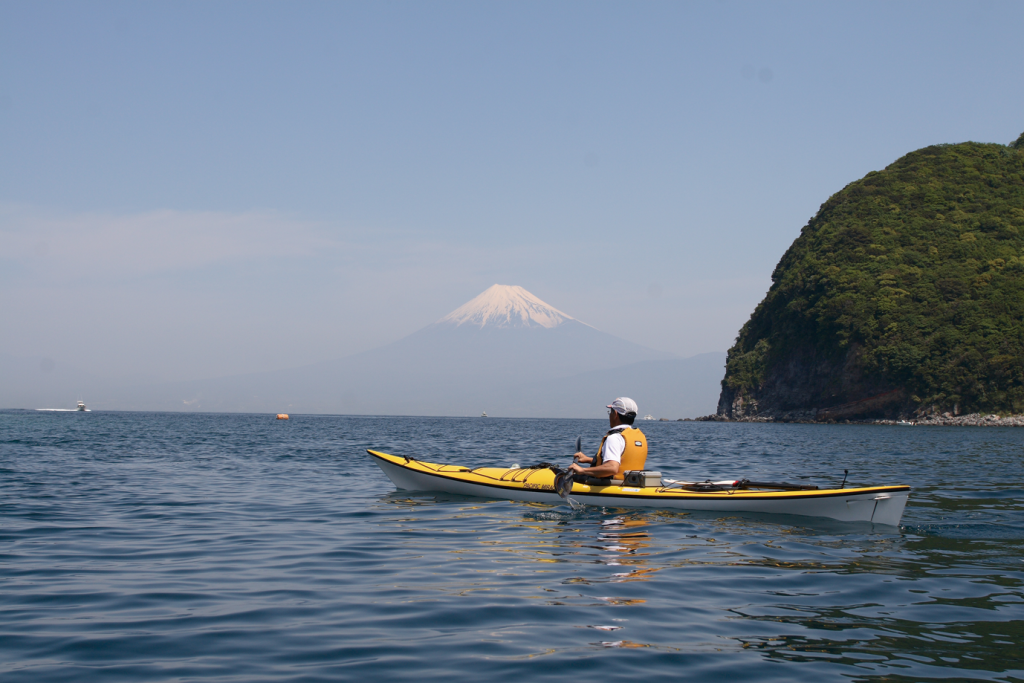When you think of sea kayaking, Japan may not be the first place that jumps to mind, but with literally thousands of kilometers of coastline (kaigansen), the entire country is a hidden treasure trove of beautiful places to shee kayakku.

When kayaking in Japan, many Japanese words will be easy to remember, since they’re pretty much the same in English. A lifejacket is called a raifu jaketto or PFD (personal floatation device) pronounced pee-dee-efu, and a paddle, a padoru. Easy! Note that the action of paddling is not to “padoru” but to “kogu.” For example, “kayakku wo kogu” (to paddle a sea kayak) or “Kogini ikou!” (Let’s go paddling!).
When out on the ocean, it’s always good to have some emergency words on hand. A particularly useful one is “chin” (pronounced cheen). This means you’ve capsized. It’s a sudden, sometimes shocking, but very common occurrence so stay calm and, while clinging on to the side of your kayak, shout to your friends, “Chin shichatta! Tasukete!” (Help me! I’ve capsized!)
Another emergency word is funayoi which is the word for seasick. “Funayoi ni natte shimatta” (I feel seasick). A good way to overcome this is not to look at the nami (waves) but fix your gaze at something far in the horizon.
If you’re feeling genki (well), you may want to bring your ashihire (fins/flippers), masuku (mask) and shunohkeru (snorkel) and jump out of your kayak to try some shunohkeringu (snorkeling). Be sure to watch out for the stinging kurage (jellyfish), though.





